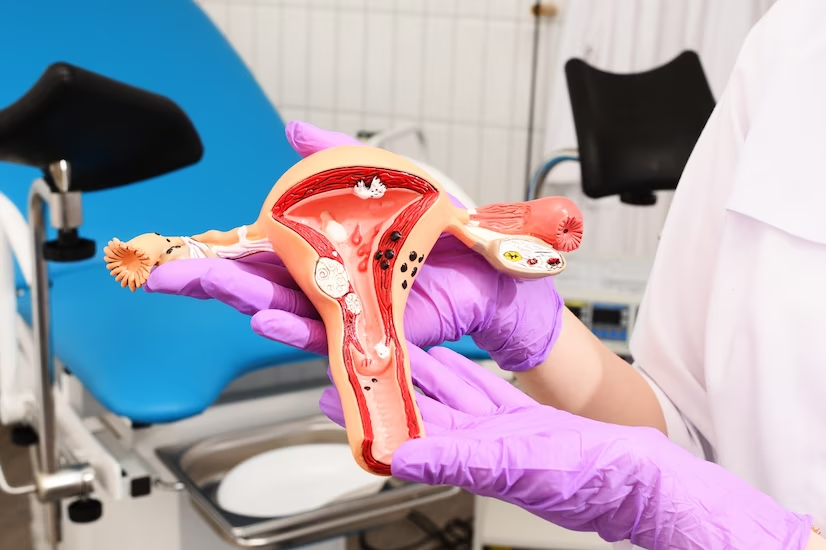Introduction
Recent research has highlighted a critical concern: Pregnant women exposed to air pollution are likelier to give birth to smaller babies, underscoring the far-reaching consequences of environmental pollution on human health. These findings resonate with a body of evidence from previous studies, particularly those emphasizing the adverse effects of pollution on fertility, pregnancy outcomes, fetal health, and development.1 It is essential to delve into the intricate relationship between environmental pollutants and reproductive health, especially during pregnancy.
The Vulnerable Beginnings
From their earliest stages of development, even in the womb, children are among the most sensitive groups regarding the detrimental effects of air pollution.2 Their unique vulnerability stems from factors such as higher breathing rates per kilogram of body weight and increased outdoor activities, which amplify their exposure to pollutants. Furthermore, children’s longer life expectancy means they have more time to develop health issues arising from earlier exposures.2
Alarming Statistics and Warnings
The World Health Organization (WHO) has issued alarming statistics, revealing that approximately 1.7 million children under the age of 5 have succumbed to diseases and conditions linked to environmental factors, including air pollution.3 These conditions not only pose immediate risks but can also have long-term health consequences.
Health authorities and scientists have been sounding the alarm about the perils of air pollution for decades.4 These perils span from minor irritations like eye and throat discomfort to severe consequences such as cardiorespiratory problems and lung cancer, depending on factors like age and exposure levels. Despite advancements in technology, the issue of air pollution remains far from resolved.4
Focus on Gestational Exposure
This article focuses on the specific effects of gestational exposure to urban air pollution on fetal development and neonatal outcomes.5 Urban air pollution, primarily from fossil fuel combustion, comprises a complex mixture of toxic components, including carbon monoxide, nitrogen dioxide, sulfur dioxide, ozone, lead, polycyclic aromatic hydrocarbons (PAH), and particulate matter.6 Particulate matter, characterized by its tiny size and propensity to adsorb other toxic agents, emerges as the most concerning pollutant due to its ability to breach physiological barriers, including the placental barrier.6
Air quality is gauged by the concentration of criteria pollutants measured daily. Organizations like the WHO establish acceptable limits for these pollutants based on their associated health risks. However, it’s worth noting that regional standards, like those in Brazil, may be less stringent than the WHO’s guidelines, potentially putting populations at greater risk.6
Negative Effects of Gestational Exposure
Studies have unveiled a spectrum of negative effects of gestational exposure to air pollution, including respiratory and cardiovascular diseases, neoplasia, and, more recently, adverse reproductive outcomes, neurodegenerative diseases, and metabolic disorders.7 Importantly, these early exposures during pregnancy can predispose individuals to health issues later in life, such as cardiovascular disease, stroke, chronic respiratory disease, diabetes, and cancer.7
Critical Outcomes
Some of the primary outcomes observed in epidemiological studies due to gestational exposure to pollution include low birth weight (LBW), intrauterine growth restriction (IUGR), prematurity, congenital malformations, and neonatal mortality8. Meta-analysis results suggest that even a 10 μg/m3 increase in PM 2.5 can lead to reductions in birth weight ranging from -15.9 to -23.4 g.8 Furthermore, exposure during the third trimester appears to be particularly critical.9
Newly Discovered Effects
Recent research has uncovered additional effects of gestational exposure, including conditions like preeclampsia, hypertension, gestational diabetes, placental abruption, premature rupture of membranes, placenta previa, and accrete.10,11 maternal exposure to 5 μg/m3 increments in ambient PM 2.5 has been linked to a 50% increased risk of pregnancy-induced hypertension and preeclampsia.12
Mechanisms at Play
Various proposed mechanisms may explain how noxious substances in air pollution adversely affect gestation. Some mechanisms include increased oxidative stress, systemic maternal inflammation, elevated blood pressure, and impairment of endothelial function.13 However, the precise mechanisms through which different pollutants influence fetal development remain a topic of ongoing research.6
Unanswered Questions
Numerous uncertainties still surround the association between gestational exposure to air pollution and its impact on birth outcomes. Questions persist about which trimester of pregnancy is most susceptible to fetal development impairment, which specific pollutant components pose the greatest risks, and whether multigenerational exposure to ambient PM concentrations presents cumulative effects.6
Conclusion and Future Directions
In urban settings, exposure to air pollution is nearly inevitable, given that half of the global population resides in cities with varying degrees of air pollution.6 Prenatal exposure to air pollution heightens the risk of LBW and IUGR, increasing the likelihood of hypertension, diabetes, and metabolic disorders later in life.6 These findings underscore the need for active engagement by the health sector in shaping policies that influence environmental quality, ultimately impacting the health of future generations yet to be born.
In conclusion, the impact of air pollution on newborns’ and children’s health is a matter of great concern. As research in this field continues to evolve, it is essential to prioritize clean air and green spaces for current well-being and the health and vitality of generations to come. The findings from these studies provide critical insights into the intricate relationship between pollution and pregnancy outcomes, emphasizing the need for decisive action to safeguard the health of both mothers and their unborn children.
References
- KP Stillerman, DR Mattison, LC Giudice, TJ. Woodruff. Environmental exposures and adverse pregnancy outcomes: a review of the science. Reprod Sci, 15 (2008), pp. 631-650
- PD Gluckman, MA Hanson, HG. Spencer Predictive adaptive responses and human evolution Trends Ecol Evol, 20 (2005), pp. 527-533
- World Health Organization (WHO). Don’t pollute my future! The impact of the environment on children’s health.
- B Siciliano, G Dantas, CM Silva, G. Arbilla. The Updated Brazilian National Air Quality Standards: A Critical Review. J. Braz. Chem Soc., 31 (2020), pp. 523-535
- H Bové, E Bongaerts, E Slenders, EM Bijnens, ND Saenen, W Gyselaers, et al. Ambient black carbon particles reach the fetal side of human placenta. Nat Commun, 10 (2019), p. 3866
- G Oberdörster, Z Sharp, V Atudorei, A Elder, R Gelein, W Kreyling, et al. Translocation of inhaled ultrafine particles to the brain. Inhal Toxicol, 16 (2004), pp. 437-445
- I Manisalidis, E Stavropoulou, A Stavropoulos, E. Bezirtzoglou. Environmental and Health Impacts of Air Pollution: A Review: Front Public Health, 8 (2020), p. 14
- CH Backes, T Nelin, MW Gorr, LE. Wold. Early life exposure to air pollution: how bad is it? Toxicol Lett, 216 (2013), pp. 47-53
- DM Stieb, L Chen, M Eshoul, S. Judek. Ambient air pollution, birth weight and preterm birth: a systematic review and meta-analysis. Environ Res, 117 (2012), pp. 100-111
- M Sun, W Yan, K Fang, D Chen, J Liu, Y Chen, et al. The correlation between PM2.5 exposure and hypertensive disorders in pregnancy: A Meta-analysis. Sci Total Environ, 703 (2020), Article 134985
- H Hu, S Ha, J Roth, G Kearney, EO Talbott, X. Xu. Ambient Air Pollution and Hypertensive Disorders of Pregnancy: A Systematic Review and Meta-analysis Atmos Environ (1994), 97 (2014), pp. 336-345
- M Pedersen, L Stayner, R Slama, M Sørensen, F Figueras, MJ Nieuwenhuijsen, et al. Ambient air pollution and pregnancy-induced hypertensive disorders: a systematic review and meta-analysis. Hypertension, 64 (2014), pp. 494-500
- S Kannan, DP Misra, JT Dvonch, A. Krishnakumar. Exposures to airborne particulate matter and adverse perinatal outcomes: a biologically plausible mechanistic framework for exploring potential effect modification by nutrition Environ Health Perspect, 114 (2006), pp. 1636-1642



